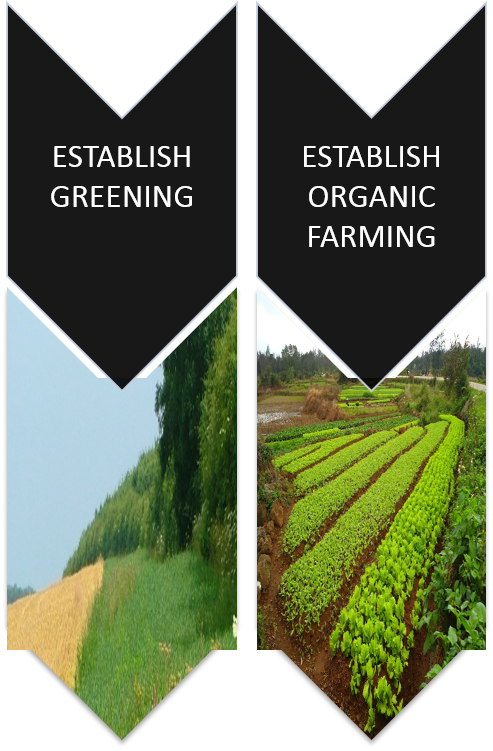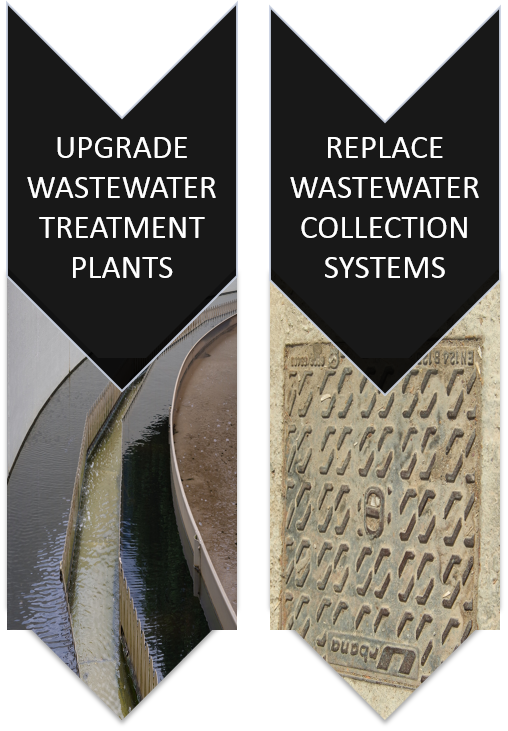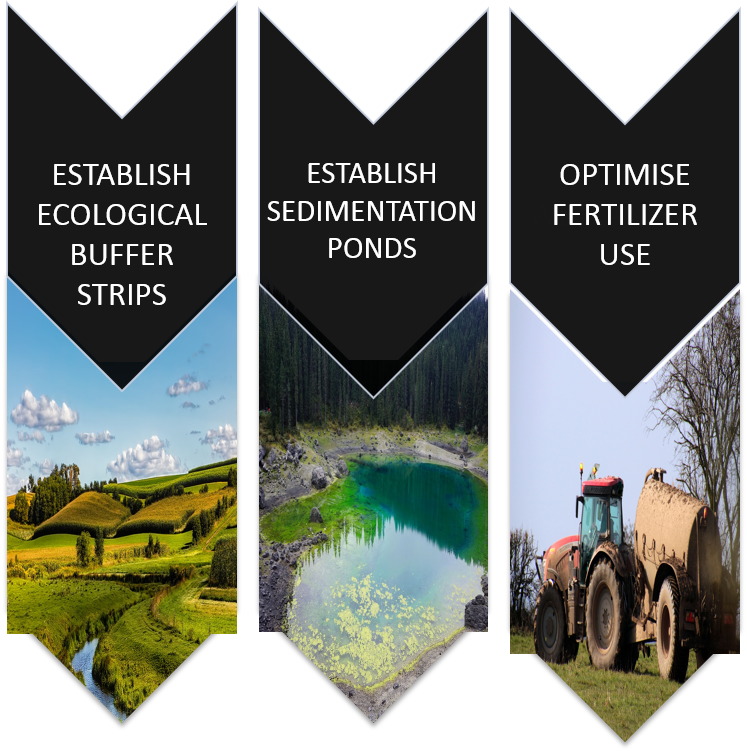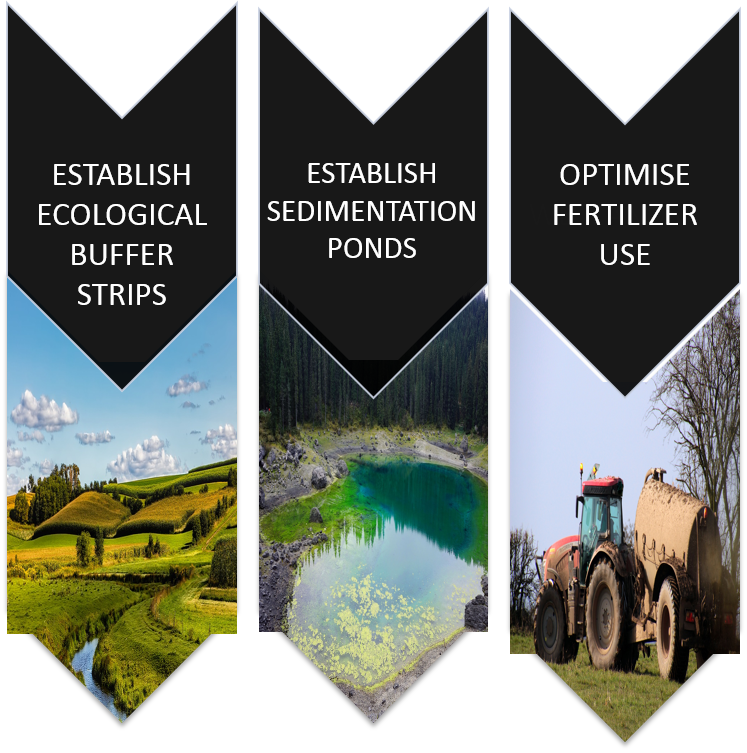Pathway 1 – Business as usual
The pathway includes the establishment of greening through crop diversification, ecological focus areas and perennial grasslands and the implementation of a rural development programme that promotes organic farming.

Pathway 2 – Upgrading of Municipal Wastewater Treatment Plants (2021-2030)
In this pathway three wastewater treatment plants with a capacity of 300 person equivalents (PE) are upgraded according to HELCOM Recommmendation 28E/5 (total nitrogen of 25mg/l, total phosphorus of 2 mg/l) and existing ceramic waste water collection system replaced to eliminate stormwater and groundwater infiltration.

Pathway 3 – Establishing Agri-ecological Measures – Buffer strips These pathways entail the establishment of: ecological buffer strips to reduce nutrient loading from cultivated agricultural land to surface drainage ways and 180 sedimentation ponds in open melioration ditches to reduce nutrient loading from meliorated cultivated agricultural land to surface drainage ways. In addition, fertilizer use is optimized through the reduction of mineral fertilizer application (NH4NO3 (N34%) and P2O5 20%) by 20% on 5 crop types (winter wheat, summer wheat, summer barley, summer rapeseed, winter rapeseed) to reduce nutrient loading from meliorated cultivated agricultural land to surface drainage ways.
3a
10 m wide strips along Nationally Significant Waterways and 2 m wide strips along open melioration ditches

3b
5 m wide strips along Nationally Significant Waterways and 2 m wide strips along open melioration ditches

Pathway 4 – Upgrading of Hydro-electric Plants
In this pathway, fishways will be installed on five hydro-electric plants (Berze, Dobele, Annenieku, Bikstu-Paleju, Bikstupe) to improve fish migration and spawning opportunities, aquatic biodiversity and recreational angling opportunities.

NOTE: All pathways were calculated with climate change forcing data for the 2020s impact period (2011 to 2030). Forcing data from two models from the EURO-CORDEX ensemble were used to cover ensemble spread, both driven with the RCP8.5 scenario. The models used were WRF-IPSL-CM5A-MR and RCA4-CanESM2. Baseline results were calculated with the 2010s reference period (2001 to 2020). All climate change forcing data was bias-corrected to WATCH Forcing Data – ERA INTERIM (WFDEI) reanalysis forcing data.